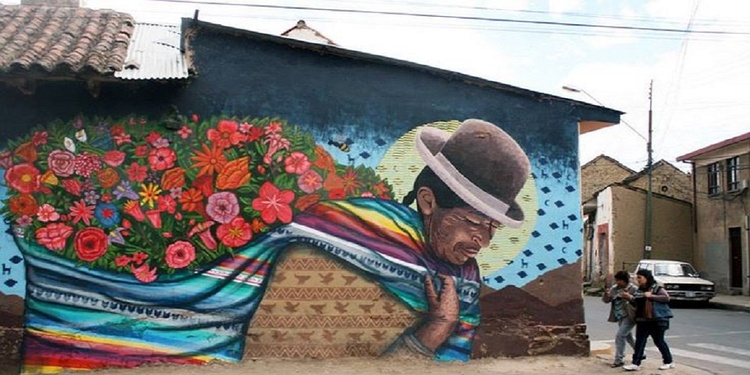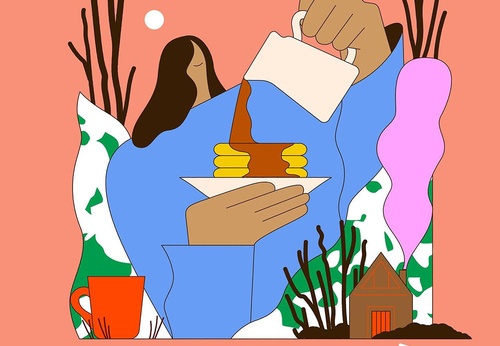
The history of Bolivian art
The history of art in Bolivia dates back to the country's first inhabitants, who created rock art, ceramics, and textiles. The art of pre-Columbian cultures, such as the Tiwanaku, the Moche, and the Incas, is remarkable for its complexity, beauty, and spiritual significance.
After the Spanish conquest, Bolivian art was influenced by European traditions. Colonial artists created religious paintings, sculptures, and architectural works that combined indigenous and Spanish elements.
In the 19th century, Bolivian art developed in a more secular direction. Artists began to explore social and political themes, and to experiment with new techniques and styles. Some of the most important artists of this period include Melchor Pérez de Holguín, Arturo Borda, and Marina Núñez del Prado.
In the 20th century, Bolivian art continued to evolve. Artists of this period explored a wide range of styles and subjects, from social realism to abstract art. Some of the most important artists from this period include Gil Imaná, Jorge de la Vega, and René Zavaleta Mercado.
Currently, Bolivian art is in a moment of great vitality. Artists across the country are exploring new materials, techniques, and subject matter, creating works that are both challenging and beautiful.
Some of the most important movements and trends in Bolivian art in recent years include:
Indigenous art, which is based on the traditions and beliefs of the indigenous cultures of Bolivia.
Urban art, which is expressed through graffiti, muralism and other forms of public art.
Contemporary art, which explores new and experimental themes and techniques.
Bolivian art is an integral part of the country's culture. It is an expression of Bolivia's rich history and diversity, and a testament to the talent and creativity of its artists.
Latamarte


- July 12, 2025
Gallery of Illustration by Xoana Herrera from Argentina

- July 12, 2025
Gallery of Illustration by Justyna Stasik from Poland

- July 12, 2025
Gallery of Typographic Posters by Li Xu – China

- July 11, 2025
Works by Six Latin American Artists

- July 11, 2025
IdN Magazine Volume 21, No.4 : Pattern Special

- July 11, 2025
Gallery of Posters by Daniel Warner from USA

- July 11, 2025
YEMEN


- July 10, 2025
The Evolution of Graphic Design from Ty…

- July 10, 2025
How Digital Artists Collaborate with Ar…

- July 09, 2025
The Value of Art in Education

- July 09, 2025
Art as a Reflection of Society

- July 08, 2025
The history of Bolivian art

- July 08, 2025
Protecting Art in the Age of Artificial…

- July 04, 2025
Graphic Design and Creating Iconic Bran…

- July 04, 2025
Photography as a Tool for Telling Histo…

- July 03, 2025
Painting and abstract art: differences …

- July 02, 2025
The Best Software for Digital Art and G…

- July 01, 2025
How Digital Artists Collaborate with Ar…

- July 01, 2025
Reflections of Digital Art in Different…

- June 30, 2025
Crítica de Obras Artísticas Criadas por…

- June 30, 2025
What are Plastic Arts?

- June 30, 2025
Images Against Silence: Artists Who Cha…

- June 29, 2025
History of Art Photography in the 20th …

- June 28, 2025
The 11 types of art and their meanings

- June 28, 2025
Contemporary Art is postmodern art

- June 26, 2025
Graphic Design, Art, and Technology: Wh…

- June 25, 2025
Graphic Design and Modern Content Creat…

- August 29, 2023
The history of Bolivian art

- February 19, 2024
Analysis and meaning of Van Gogh's Star…

- January 28, 2024
Culture and Art in Argentina

- September 25, 2023
What is the importance of art in human …

- September 23, 2023
What is paint?

- August 10, 2023
14 questions and answers about the art …

- August 30, 2023
First artistic manifestations

- August 23, 2023
The 11 types of art and their meanings

- January 12, 2024
10 most beautiful statues and sculpture…

- September 23, 2023
Painting characteristics

- September 23, 2023
History of painting

- August 16, 2023
The 15 greatest painters in art history

- April 06, 2024
History of visual arts in Ecuador

- March 26, 2024
The importance of technology in art1

- January 31, 2024
Examples of Street Art – Urban Art

- January 20, 2024
What is the relationship between art an…

- March 26, 2024
Cultural identity and its impact on art…

- April 07, 2024
Graffiti in Latin American culture

- October 21, 2023
Contemporary art after the Second World…

- August 25, 2024
A Comprehensive Analysis of the Cartoon…

- February 19, 2024
Analysis and meaning of Van Gogh's Star…

- August 13, 2023
9 Latino painters and their great contr…

- August 10, 2023
14 questions and answers about the art …

- August 29, 2023
The history of Bolivian art

- January 28, 2024
Culture and Art in Argentina

- August 23, 2023
The 11 types of art and their meanings

- November 06, 2023
5 Latin American artists and their works

- August 27, 2023
15 main works of Van Gogh

- September 23, 2023
Painting characteristics

- September 23, 2023
What is paint?

- September 25, 2023
What is the importance of art in human …

- December 18, 2023
10 iconic works by Oscar Niemeyer, geni…

- August 30, 2023
First artistic manifestations

- January 20, 2024
What is the relationship between art an…

- March 26, 2024
Cultural identity and its impact on art…

- January 12, 2024
10 most beautiful statues and sculpture…

- October 30, 2023
Characteristics of Contemporary Art

- August 22, 2023
What are Plastic Arts?

- April 16, 2024
The most important painters of Latin Am…

- August 24, 2023


